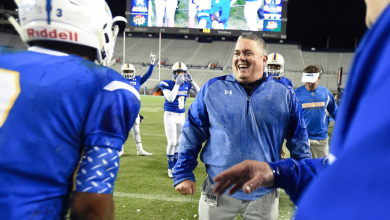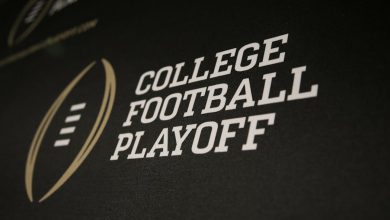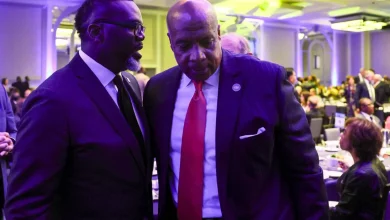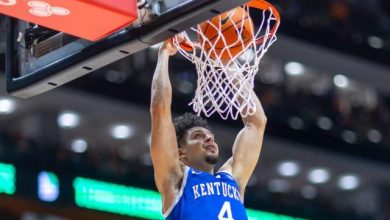Matthew Stafford of the Rams played against the Eagles despite having broken ribs.
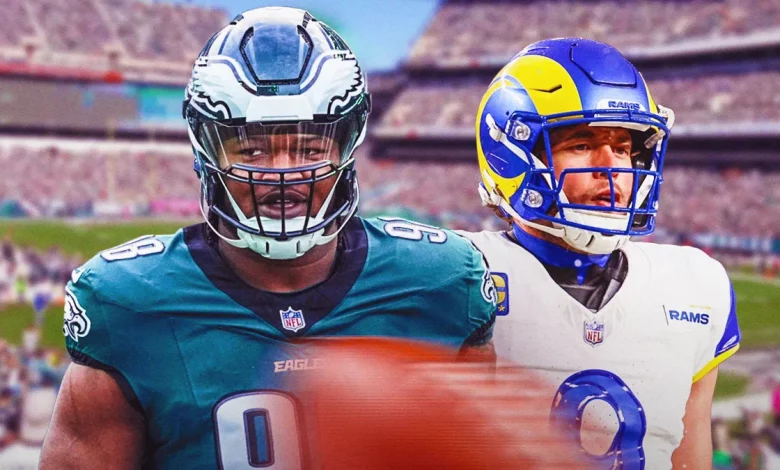
Matthew Stafford’s legendary toughness has always been one of the defining characteristics of his career, and perhaps no moment highlighted that more than his courageous decision to play through a significant injury—broken ribs—during a high-profile game against the Philadelphia Eagles. Stafford’s willingness to push through such a painful injury spoke volumes about his dedication to his team, his competitive nature, and his commitment to winning, even at the expense of his own health. This remarkable display of resilience not only exemplified Stafford’s leadership but also raised critical questions about the physical and mental toll of playing quarterback in the National Football League.
To fully understand the gravity of Stafford’s decision to play with broken ribs against the Eagles, it’s important to first understand the nature of the injury itself and the conditions surrounding his decision to suit up. Playing through injuries in the NFL is hardly uncommon—many players deal with varying degrees of physical pain throughout a season—but Stafford’s situation stood out for its combination of the severity of the injury and the timing of the game, as the Rams were navigating a challenging season.
The Injury: Broken Ribs
Ribs are some of the most vulnerable parts of the body for a football player, and broken ribs can be extremely painful, especially for a quarterback who relies heavily on his upper body for throwing and mobility. The ribs provide protection to vital organs, including the lungs and heart, so a break or fracture in this area is no trivial matter. Broken ribs can lead to significant pain when breathing, coughing, or performing any motion that requires rotation or deep movement of the torso.
In Stafford’s case, he reportedly suffered the injury during a game earlier in the 2023 season. The pain was so severe that, at first, there were doubts about whether he would be able to play for several weeks. The injury put Stafford in a tough spot: while he had always prided himself on being a tough, durable player, broken ribs would certainly challenge his ability to perform at a high level. Any sudden movement or hit to the area could aggravate the injury further, making it difficult for him to execute throws with precision and velocity.
Despite this, Stafford’s desire to play through the pain and contribute to his team’s success was clear. Overcoming such an injury requires immense mental fortitude and a deep commitment to the team. It also takes a great deal of physical preparation, as quarterbacks like Stafford must not only manage pain but also ensure they can move and perform at an elite level despite it. For Stafford, the decision to play against the Eagles, despite the pain and risk of further injury, would showcase his mentality and leadership style.
Stafford’s History of Playing Through Pain
Matthew Stafford is no stranger to playing through injuries. Throughout his career, he has established himself as one of the NFL’s toughest quarterbacks, often playing through significant pain and physical adversity. Stafford’s reputation for toughness goes back to his early years with the Detroit Lions, where he battled through an array of injuries, including shoulder problems, ankle sprains, and finger issues. His ability to play despite such injuries earned him respect across the league, with his determination becoming one of his trademarks.
Stafford’s injury history paints a picture of a quarterback who is willing to do whatever it takes to be on the field. Perhaps the most notable of his previous injuries was a shoulder issue in 2011 that forced him to play with a torn ligament in his throwing shoulder for several weeks. Despite the discomfort, Stafford still put up impressive numbers and led the Lions to their first playoff appearance in more than a decade. That was a pivotal season in Stafford’s career, as it solidified his reputation as a resilient leader.
Throughout his career, Stafford’s body has endured significant wear and tear. However, his resilience has never wavered. Even in the face of debilitating injuries, Stafford has consistently made the decision to play through pain in order to lead his team, earning the admiration of coaches, teammates, and fans alike. His ability to remain focused and effective despite physical setbacks made him a symbol of toughness in the NFL.
Playing Through Broken Ribs: The Mental and Physical Challenge
Playing through an injury as severe as broken ribs is not a decision that comes easily, particularly for a quarterback who relies on his throwing mechanics and physical mobility to perform. For Stafford, the pain and limitations of the injury would make it difficult to execute the throws he is known for: deep passes, touch throws, and rapid-fire decision-making.
Moreover, the broken ribs added an additional layer of concern: the potential for further injury. Any hit to the ribs or an awkward throw could exacerbate the situation, leading to a more severe injury that could sideline Stafford for even longer. The possibility of a punctured lung or internal bleeding from a direct hit to the area made the stakes even higher. In essence, Stafford was playing with a time bomb in his body, knowing that every snap carried a significant risk.
Despite this, Stafford’s determination to play through the injury spoke volumes about his commitment to his team and his competitive spirit. For Stafford, being on the field wasn’t just about fulfilling his role as the quarterback—it was about showing his teammates that he was willing to fight through adversity for the sake of the team’s success. As the leader of the Rams’ offense, his decision to play was an important signal to the locker room that no challenge was too great.
The Rams’ Struggles and the Significance of the Game
At the time Stafford suited up to face the Eagles, the Los Angeles Rams were in the midst of a challenging season. After winning the Super Bowl in 2022, the team was working through some roster changes and adjustments. The Rams were fighting to stay competitive in the NFC West, but they faced tough competition from teams like the San Francisco 49ers and Seattle Seahawks.
For Stafford, this game against the Eagles was not just another contest—it was an opportunity to lead the team to an important victory in a season that could determine the future direction of the Rams. While the Rams’ offense had been inconsistent, Stafford’s leadership remained vital to their success. With the team needing a win to stay relevant in the playoff race, Stafford’s decision to play despite his injury showed just how much he was willing to sacrifice for his team’s success.
In this context, Stafford’s toughness became symbolic. It was not simply about playing through pain; it was about embodying the mentality of a team that would not give up, no matter how difficult the circumstances. In a season where the Rams had suffered multiple setbacks, Stafford’s leadership became more important than ever. His willingness to play, despite knowing the risks, showed his desire to win and his belief in his teammates.
The Game Against the Eagles: A Defining Moment
The game between the Rams and the Eagles would become one of those defining moments in Stafford’s career, a testament to both his skill and his resolve. Despite the broken ribs, Stafford showed up for the game and led the Rams onto the field. For much of the contest, it was evident that Stafford was in pain, but he refused to back down. He made crucial throws under pressure, including several key completions in critical moments of the game, demonstrating his ability to play effectively despite the injury.
Despite his obvious discomfort, Stafford’s performance remained strong, and his presence on the field gave his team a sense of confidence and determination. The game was a hard-fought battle, with the Eagles, led by their own star quarterback, Jalen Hurts, proving to be a formidable opponent. Yet Stafford’s grit and leadership kept the Rams in the game, even when things seemed bleak. His ability to make plays while visibly compromised was a testament to his toughness and his unyielding commitment to the team.
While the Rams ultimately lost the game, Stafford’s performance was a highlight of the day. The Eagles’ defense knew that Stafford was injured, and they undoubtedly tried to take advantage of his vulnerable condition, yet Stafford was still able to move the ball and make significant contributions. In many ways, this performance solidified his legacy as one of the toughest quarterbacks to ever play the game. It also reinforced the idea that Stafford was more than just a talented passer—he was a leader who would go to any lengths to help his team succeed.
Legacy of Toughness and Leadership
Matthew Stafford’s decision to play through broken ribs against the Eagles adds yet another chapter to his legacy as one of the toughest and most resilient quarterbacks of his era. It is a defining moment that captures the essence of Stafford’s approach to the game: a willingness to sacrifice personal comfort for the greater good of the team.
Stafford’s leadership style, shaped by his ability to play through adversity, has been a hallmark of his career. His toughness inspires those around him and serves as an example for other players, especially quarterbacks who face similar challenges. The game against the Eagles might not have ended in victory, but Stafford’s courage under fire spoke volumes about his character and commitment.
As Stafford continues his career with the Los Angeles Rams, it’s clear that moments like these—playing through broken ribs and other injuries—will be remembered as part of what makes him one of the most respected quarterbacks in NFL history. Whether he has one more season left in him or decides to walk away in the near future, Stafford’s legacy will forever be defined by the toughness, leadership, and unwavering resolve he displayed throughout his career, culminating in moments like his performance against the Eagles.



